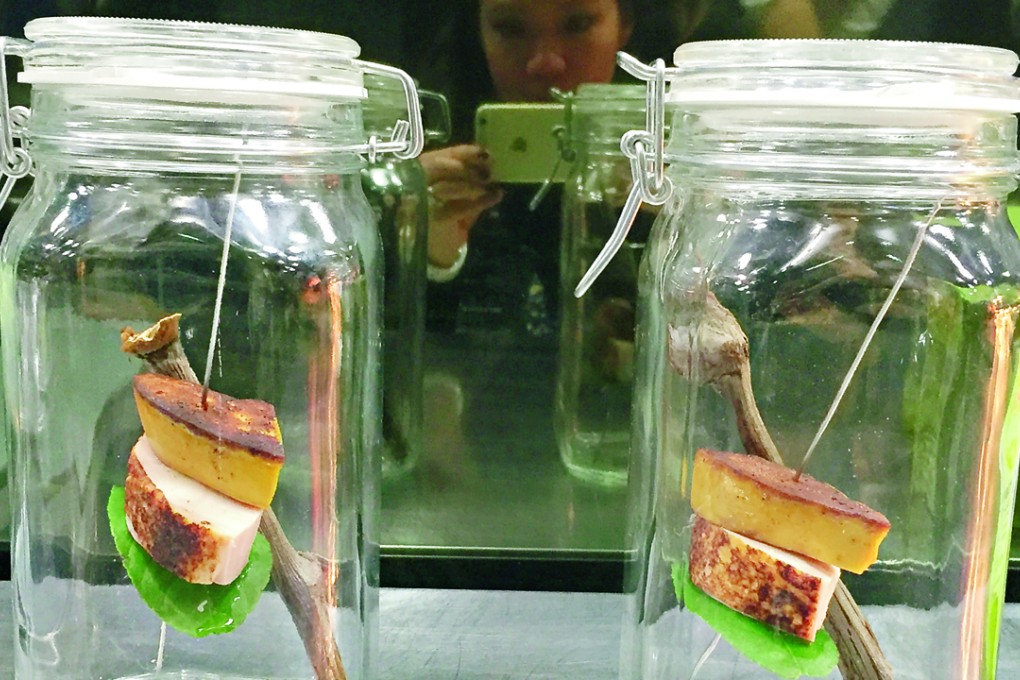Dinner as theatre: behind the scenes at Ultraviolet, Shanghai ‘immersive’ restaurant
The ‘actors’ - Paul Pairet’s chefs and servers – present 20-course French menu to their ‘audience’: one table of guests amid a vast room who are fed sounds, smells, images and incident along with the dishes. Kitchen team get a voyeuristic thrill as they watch CCTV cameras convey the diners’ reactions

Having to stay in the kitchen of Ultraviolet in Shanghai while chef Paul Pairet and his team cook for a table full of guests – all chefs who have between them a total of 25 Michelin stars – might make it seem like I’ve been relegated to second class status. But I’m philosophical about it; after all, anyone who plans far enough in advance can book a place at the 10-seat “immersive dining” restaurant, but not everyone gets to witness what goes on behind the scenes.
The 10 guests have met in advance before being driven to Ultraviolet, which is in an undisclosed location. Head chef Greg Robinson gets a phone call, alerting him that the guests are en route – timing is key here – and the kitchen moves into action.
I am already at the grungy warehouse creative space with Pairet. The size of Ultraviolet is about the equivalent of a football field, and would seat about 100 if it were a “normal” restaurant. Pairet’s vision is different, though: his place only seats only 10.

It’s fascinating to observe the Ultraviolet chefs cooking with absolute precision while watching the guest’s reactions to the food and the multisensory experience in the dining room as seen through CCTV cameras. The servers pick up the dishes according to cues and tempo – exactly how a theatre production is run.
It goes like clockwork, with timing and temperatures planned right down to the decimal point. The kitchen is silent, apart from the occasional beeping equipment and a call-out for the next scene and next dishes.